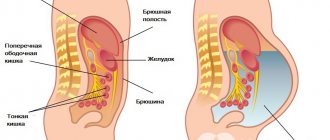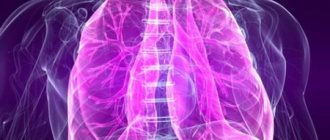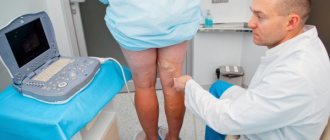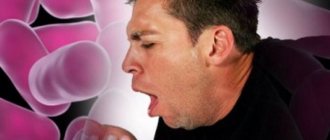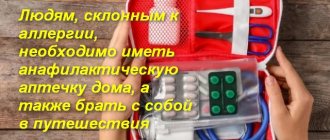What is Quincke's edema
The German physician Heinrich Irenaeus Quincke first gave a complete description of the disease and suggested the causes of its occurrence in 1882, for which angioedema was named after him.
Quincke's edema, or angioedema, is an acute inflammatory reaction of the body that occurs locally in the skin and subcutaneous tissue. The mechanism of appearance is similar to urticaria, the only difference is in deeper tissue damage.
Allergic reactions are one of the immune system's response to foreign proteins. They involve mast cells - one of the types of leukocytes that are able to combine with immunoglobulin proteins Ig E. This leads to a cascade release of biologically active substances - mediators of inflammation. These include histamine, prostaglandins, bradykinin and many others. These substances increase the permeability of blood vessels, reduce their tone, and change the water-salt balance.
The peculiarity of mast cells is that they are not constantly in the blood, like other leukocytes, but are localized in tissues:
- in the skin;
- subcutaneous tissue;
- on mucous membranes;
- in the membranes of internal organs.
Therefore, Quincke's edema has specific manifestations and is observed only on the skin and in places with the most pronounced fiber.
The increased permeability of blood vessels caused by these substances leads to the release of the liquid part of the blood from the vessels. It permeates the local area, which is externally manifested by swelling of the soft tissues. Fluid losses can be significant; blood volume in the vascular bed decreases. As a result, heart function suffers and rhythm disturbances appear. In adults with a predisposition to heart disease, the consequences can be fatal.
Treatment at home
Treatment of Quincke's edema outside the acute stage at home includes:
- Complete exclusion of the patient’s contact with an identified allergen if the cause of the swelling develops as an allergic reaction with symptoms of urticaria.
- Short courses of hormones that temporarily “block” the reactions of the immune system, Prednisolone, Dexazone, Dexamethasone. Prednisolone. For adults - up to 300 mg, for newborns the dose is calculated according to the formula 2 - 3 mg per kg of baby's body weight, for children over one year old and schoolchildren from 7 years old at the same dosage. Dexamethasone for adults - 60 - 80 mg, for small patients - in a strictly calculated dosage by weight: 0.02776 - 0.16665 mg per kilogram.
- Preparations to strengthen the nervous system (calcium, ascorbic acid).
- Vitamin complexes, Ascorutin to reduce vascular permeability, gammaglobulins.
- The use of histamine H1 receptor blockers (antiallergic) to reduce sensitivity to the allergen and block further histamine production. In the initial period, Suprastin, Diphenhydramine, Pipolfen, Tavegil are used intramuscularly, switching to the use of antiallergic drugs in tablets Zyrtec, Ketotifen, Terfenadine, Astemizole, Fexofenadine, Loratadine, Acrivastine, Cetirizine.
Wherein:
- Suprastin: adults on average 40 – 60 mg, taking into account that the dose per kilogram of body weight cannot be higher than 2 mg. Children: 1 – 12 months: 5 mg; from 12 months to 6 years: 10 mg; from 6 to 14: 10 – 20 mg.
- Ketotifen (except for pregnant women) is indicated as an effective antiallergic agent for a combination of edema and bronchospasm, which often occurs with edema in patients with asthma or obstruction (obstruction) of the respiratory tract. Adults 1 – 2 mg 2 in the morning and evening. Children over 3 years old - 1 mg (5 ml syrup); from six months to 3 years - 0.5 mg (2.5 ml) morning and evening. Treatment is carried out for 2 – 4 months.
For swelling against the background of itchy rashes and blisters, additionally use:
- Ranitidine, Cimetidine, Famotidine are drugs that suppress histamine H2 receptors;
- so-called calcium channel blockers (20 – 60 mg of Nifedipine per day);
- leukotriene receptor antagonists (Montelukast, 10 mg per day).
There are significant differences in the treatment of hereditary angioedema from the standard treatment regimen for angioedema. Corticosteroids and antiallergic drugs are completely useless; they will not help the patient, and improper treatment of undiagnosed angioedema of hereditary origin most often leads to the death of the patient.
The main assistance is aimed at replenishing the deficiency and enhancing the production of C-1 inhibitor. In most cases they use:
- plasma infusion;
- intravenous administration of tranexamic or aminocaproic acid;
- Danazol in a daily dosage of 800 mg, Stanozolol 12 mg;
- for long-term prevention, e-aminocaproic acid is prescribed in a daily dose of 1–4 grams with regular monitoring of blood clotting (twice a month). Danazol 100 – 600 mg per day.
Symptoms of Quincke's edema
Quincke's inflammation occurs rapidly. This is a response to direct contact with an allergen, which develops 15-30 minutes after foreign substances enter the body. Swelling spreads to parts of the body that contain a large amount of fiber. Most often this is:
- eyelids;
- lips;
- larynx;
- soft sky;
- genitourinary organs.
Swelling of the skin is not accompanied by a change in its color; it often remains pale pink. But sometimes allergies are accompanied by signs of hives. In this condition, the skin begins to itch and turn red.
Classic angioedema, which is accompanied by impaired fluid distribution, is characterized by uneven contours. The tissues are dense to the touch; when pressing on them, no dimple appears. Unlike urticaria, the upper layers of the skin are not involved in the process. Therefore, itching is not typical for this disease.
Symptoms of Quincke's edema depend on its location. If the allergic reaction involves the mucous membrane of the mouth, throat and larynx, then hoarseness appears. In the absence of medical care, the pathological signs become more severe, first swallowing becomes difficult, and then breathing becomes difficult. Later, the bronchi swell, and signs of asphyxia or suffocation appear.
Sometimes allergic swelling becomes the first symptom of severe anaphylactic shock. This life-threatening condition develops rapidly as an acute reaction to an allergen. It is characterized by breathing problems due to bronchospasm, itching all over the body, and urticaria-type skin rashes. Signs of deterioration include cramping abdominal pain, nausea and vomiting, and diarrhea. In an adult, blood pressure quickly drops and heart rhythm disturbances appear. Signs of heart failure quickly appear, seizures appear, and the person falls into a coma or death.
Allergic inflammation often affects only the digestive tract. Signs of pathology in this case will imitate surgical pathologies of the abdominal cavity. Acute abdominal pain, sudden indigestion, diarrhea or vomiting appears. Sometimes blood and mucus appear in the stool, so the disease does not look like an allergy.
In some cases, Quincke's edema appears on the back of the hands. They look swollen and are dense when touched.
The occurrence of angioedema on the face is life-threatening. Uneven distribution of fluid can lead to its saturation of the meninges. In this case, meningeal symptoms appear:
- neck muscle tension;
- severe headache;
- nausea and vomiting that does not bring relief;
- convulsions;
- loss of consciousness.
Quincke's edema can develop on the genitals. In women, the labia are affected; in men, swelling spreads to the scrotum. There is usually no itching. To prevent this condition, it is sometimes necessary to abandon latex condoms.
Diet and nutrition
The diet for Quincke's edema is developed taking into account several fundamental principles:
- When developing a dietary menu for a patient with angioedema, it is necessary to be guided by the principle of elimination. In other words, it is necessary to exclude from the patient’s menu foods that can cause a direct or cross allergic reaction. The diet menu should not contain foods high in amines, including histamine, or foods with high sensitizing properties. Products should, whenever possible, be natural and not contain synthetic food additives.
- The nutritional diet must be carefully thought out, and products excluded from it must be correctly replaced. This will allow you to optimally adjust the qualitative and quantitative composition of the menu.
- The third principle is the principle of “functionality”. Products should be beneficial and help maintain and improve health.
If you follow the advice and rules of therapeutic nutrition, positive dynamics will be observed. However, diet therapy becomes the most necessary, relevant and effective measure in cases where a certain food product acts as an allergen.
The most common foods that can cause “true” and pseudoallergic reactions:
- Fish and seafood, chicken and eggs, soy, milk, cocoa, and peanuts often cause true allergic reactions. Of the plant foods, the most allergenic are tomatoes, spinach, bananas, grapes and strawberries.
- Pseudoallergic reactions can be caused by the same foods as true allergies. You can add chocolate, spices, and pineapple to the list.
- With caution, you should include foods containing biogenic amines and histamine in your menu. These are fish (cod, herring, tuna) and shellfish, cheese, eggs, spinach, rhubarb, tomatoes, sauerkraut. People with allergies should avoid wine.
- You need to exclude from the menu products that contain nitrogen-containing extractive compounds. These are legumes (lentils, beans, peas), black tea, coffee and cocoa, broths, stewed and fried meat and fish dishes.
Synthetic food additives often cause the development of allergies and swelling. Among them are preservatives (sulfites, nitrites, benzoic acid and its derivatives, etc.) and dyes (tartrazine, amaranth, azorubine, erythrosine, etc.), flavorings (menthol, vanilla, cloves and cinnamon, glutamates) and taste stabilizers.
First aid for Quincke's edema
To reduce the likelihood of severe complications, you need to provide first aid yourself before the ambulance arrives. If it is known that some allergen is the cause of the inflammatory reaction, it is necessary to try to eliminate it. This is possible if there has been contact with the skin.
If the manifestation of the disease began after an insect or animal bite, it is necessary to apply a pressure bandage to this place. It will reduce the inflow and outflow of blood, which will reduce the absorption of a dangerous substance into the blood. Do the same if an allergy develops after an intramuscular injection. Doctors advise putting cold on the injection site to cause vasospasm and prevent the medicine from being absorbed.
If a reaction develops after contact with an unknown plant, insect, or after taking a medication, you can take a photo of it. This will help the doctor determine the cause of the pathology.
If you have difficulty breathing due to swelling of the throat, you need to unfasten your clothes so as not to restrict the breathing movements of the lungs. In the room, you need to open the windows to provide fresh air.
A child who has an allergy in the form of angioedema is usually in an excited state and scared. To prevent inflammation and swelling of the larynx from developing rapidly due to crying and screaming, you need to try to calm it down. In a small child, the danger is laryngospasm, which further worsens breathing and is very dangerous under the age of one year.
You cannot take allergy medications on your own for several reasons. Absorption of tablets from the digestive tract may slow down due to inflammatory swelling of the mucous membrane of the stomach and intestines. Therefore it will be ineffective. And the emergency doctor must select the dose of the drug to treat allergies, taking into account the medication already used.
If the cause of an allergic reaction is food or other substances taken orally, you can slow down their absorption from the stomach and intestines using sorbents. A child can dissolve a packet of Smecta, Polysorb powder, and an adult can drink several tablets of activated carbon. For difficulty swallowing and laryngeal spasm, it is also better to use soluble powders.
In some forms of Quincke's edema, it is difficult to recognize the symptoms of the disease; it develops slowly over several hours or days. In this case, local swelling is a reason to consult a doctor as soon as possible.
Possible complications
Perhaps the most concerning complication is laryngeal edema, with increasing symptoms of acute respiratory distress that include progressive difficulty breathing, barking cough, and hoarseness.
Best materials of the month
- Coronaviruses: SARS-CoV-2 (COVID-19)
- Antibiotics for the prevention and treatment of COVID-19: how effective are they?
- The most common "office" diseases
- Does vodka kill coronavirus?
- How to stay alive on our roads?
If the genitourinary system is affected by edema, symptoms of acute cystitis appear. In addition, the pathology can lead to acute urinary retention. With swelling of the gastrointestinal mucosa, severe abdominal pain and dyspeptic disorders may occur.
Causes
To effectively treat angioedema and prevent its recurrence, it is necessary to discover the cause of the pathology. A child most often experiences an acute allergic reaction to a specific product. It could be egg whites, nuts, chocolate, fish, honey, citrus fruits. Sometimes the disease does not arise from the product itself, but from the additional substances it contains. For example, if you are allergic to chicken, the antibiotics that were used to treat it at the poultry farm may be to blame. Foods that contain large amounts of artificial flavors, colors, and other chemical additives are more likely to trigger an inflammatory response.
Quincke's edema, like other allergic reactions, manifests itself upon repeated contact with the allergen. Therefore, eating certain high-risk foods for the first time will not cause symptoms.
Other causes of Quincke's edema may be:
- medications - antibiotics, serums containing animal proteins;
- hormonal drugs;
- local anesthetic agents – Lidocaine, Ultracaine;
- blood products – immunomodulators, interferons;
- animal poisons, their saliva or particles of fur, insect scales;
- cosmetical tools.
Inflammation can occur on latex, which is used for medical gloves, condoms, and intravenous catheters.
Angioedema is caused by some dietary supplements, traditional medicines that contain plant allergens, bee products, and insect poisons. For people who have had an allergic reaction to honey, it is dangerous to use other components obtained from bees.
The peculiarity of Quincke's edema associated with an allergic reaction is that it does not depend on the dose of the incoming allergen.
Among the causes of angioedema are non-allergic reactions. There is a hereditary disease that is associated with a lack of complement system proteins. Normally, they participate in immune reactions. If the body has a deficiency or defect in the synthesis of inhibin C1, which inhibits the inflammatory response, then periodic signs of pathology appear, which looks like Quincke's edema. But the difference is in the speed of development of the disease; it often takes several days and it is impossible to establish a connection with a specific allergen.
If the cause of the pathology is heredity, the symptoms of the disease appear smoothly, urticaria never occurs, there is no skin itching and bronchospasm. But the risk of severe swelling of the throat, which leads to death, remains. The skin and subcutaneous tissue are able to independently return to their original state 2-3 days after the first signs of the disease appear. This is due to the gradual depletion of proteins of the complement system.
In older people, the cause of angioedema in 30% of cases is drugs from the group of ACE inhibitors. They are prescribed for the treatment of heart failure, hypertension and other cardiovascular pathologies. A side effect of ACE inhibitors is an increase in the level of bradykinin, which is one of the mediators of inflammation. This happens at different rates, sometimes several months after starting therapy, and sometimes after many years.
Prevention
To prevent recurrent allergic angioedema, the patient should adhere to a hypoallergenic diet and not take any medications without a doctor’s prescription.
To prevent relapses of hereditary angioedema, patients need to avoid stressful situations, viral infections, and traumatic injuries. They should not take estrogen-containing drugs or ACE inhibitors.
Patients suffering from hereditary angioedema, before undergoing planned surgical interventions or dental procedures, must undergo preventive treatment, including the administration of tranexamic acid and infusion of fresh frozen native plasma.
Video from YouTube on the topic of the article:
Classification
Quincke's edema in 80% of patients is associated with an allergic reaction to foreign substances. But in the practice of doctors there are also other forms of this disease. Depending on the duration of symptoms, there are two types:
- acute angioedema – occurs quickly after contact with the allergen, disappears after treatment and does not recur if you follow the doctor’s recommendations;
- chronic angioedema – signs of pathology recur periodically over 6 months or persist for a long time.
Separately, idiopathic angioedema is distinguished. It appears suddenly; it is impossible to determine the connection with the allergen in the laboratory. This type of disease is chronic and often recurs.
Quincke's edema can be hereditary or acquired. In the first case, it is a chronic disease, the development of which is difficult to predict. It can appear at an early age. Symptoms often worsen in stressful situations. Research shows that this can be triggered by:
- acute pain;
- eating certain foods;
- hypothermia;
- viral infections;
- pregnancy.
Sometimes minor injuries in the oral cavity during dental treatment or tongue piercing act as a provoking factor.
Acquired angioedema develops under conditions that lead to a lack of inhibin C1 protein. This process is activated in patients who are treated with drugs from the group of ACE inhibitors. Protein suppression occurs in neoplastic diseases - B-cell lymphoma, pathology of immune complexes. In an autoimmune disease, the pathology of immune complexes to inhibin protein C1 produces antibodies that block its functions. A similar process is observed in autoimmune diseases - systemic lupus erythematosus, dermatomyositis.
Acquired angioedema manifests itself in old age, when a person has a large number of concomitant pathologies.
Diagnostics
When angioedema is localized in the face or other open areas of the body, diagnosis is usually not difficult, but in some cases differential diagnosis is required with edema caused by other reasons:
- dermatomyositis;
- kidney diseases;
- compression syndrome of the superior vena cava;
- hypothyroidism.
Angioedema occurs at least once in a lifetime in every fifth person.
It is quite difficult to make a correct diagnosis for angioedema of the brain and digestive tract, since in these cases the symptoms of transient cerebrovascular accident or “acute abdomen” come to the fore.
Laboratory diagnosis for angioedema is rather of an auxiliary nature. In blood tests for the allergic type, an increase in the level of immunoglobulins of class E and eosinophilia are noted. Non-allergic edema is characterized by a decrease in the activity and level of C1 inhibitor in the blood serum, and the identification of laboratory signs of lymphoproliferative or autoimmune diseases.




